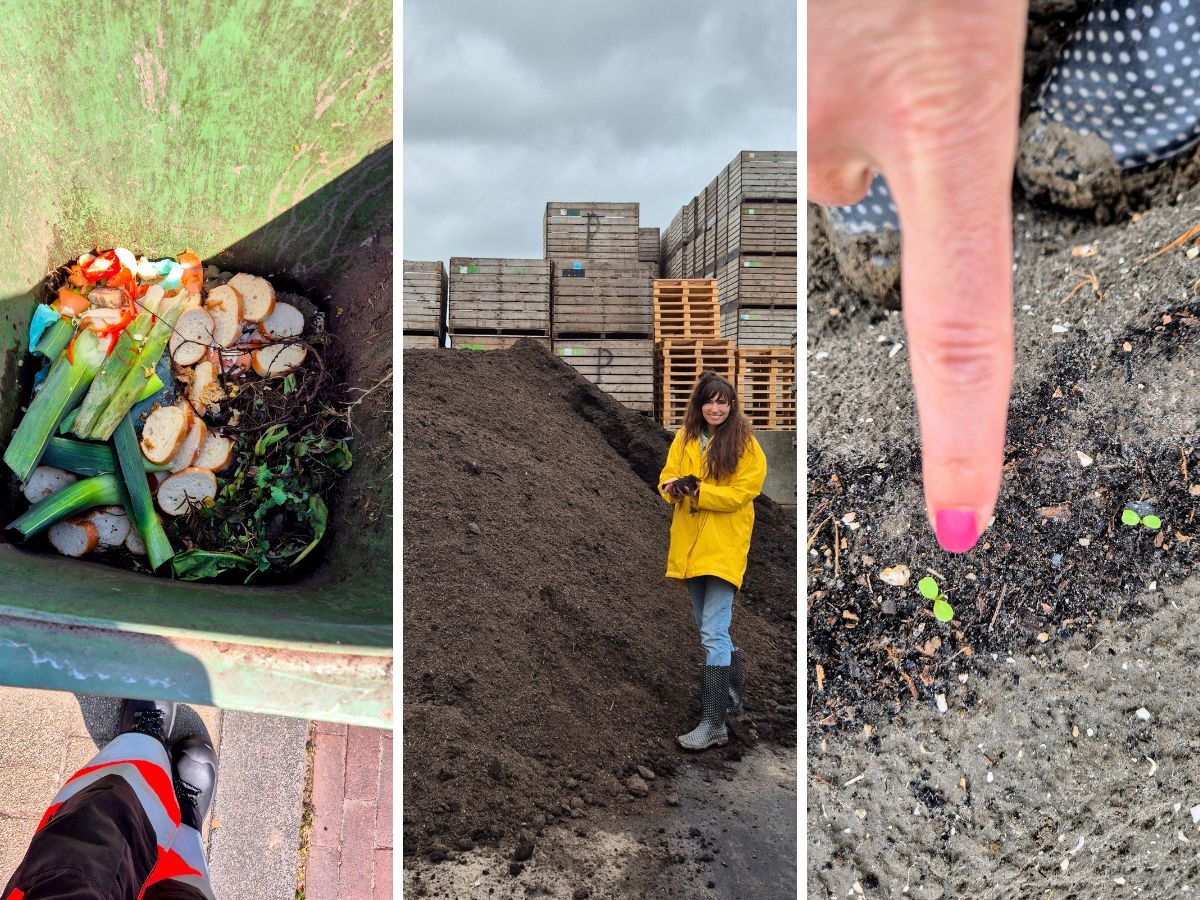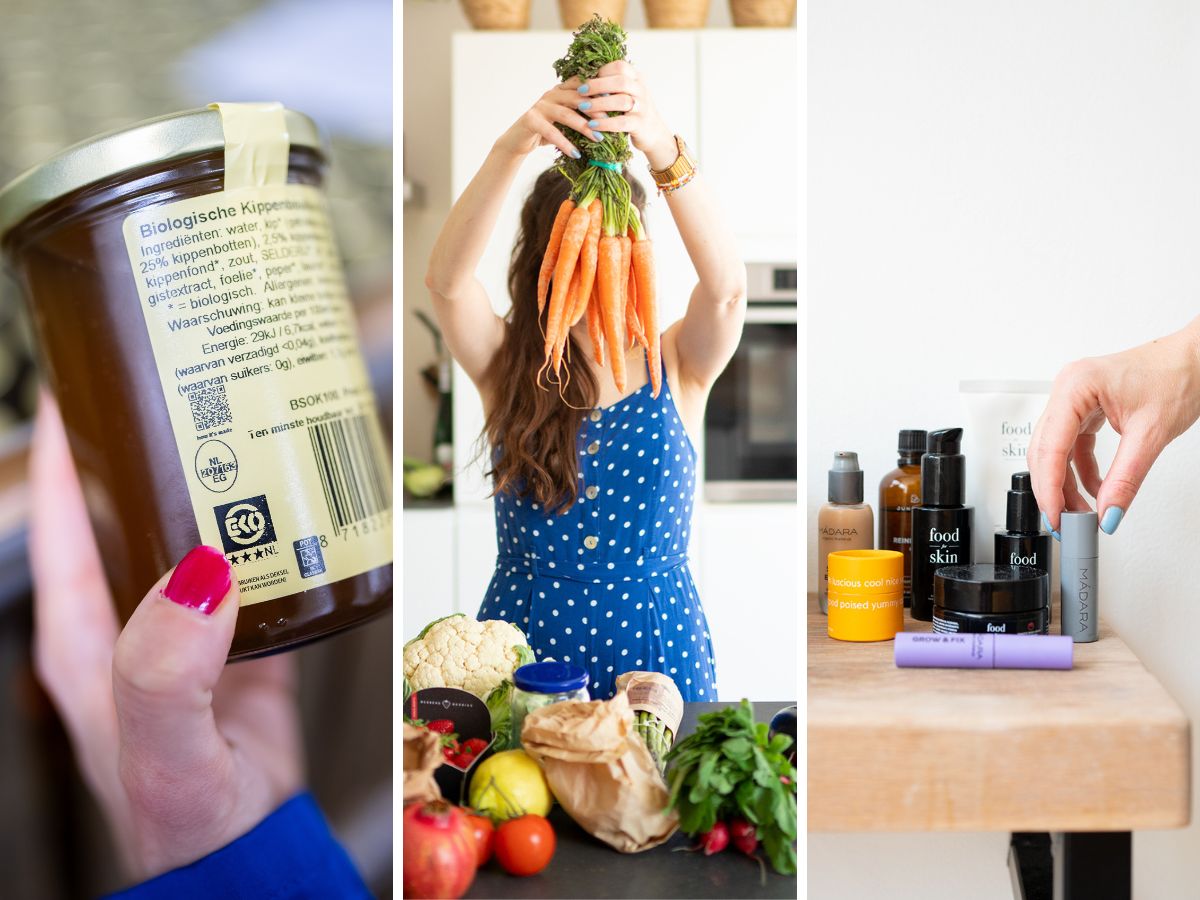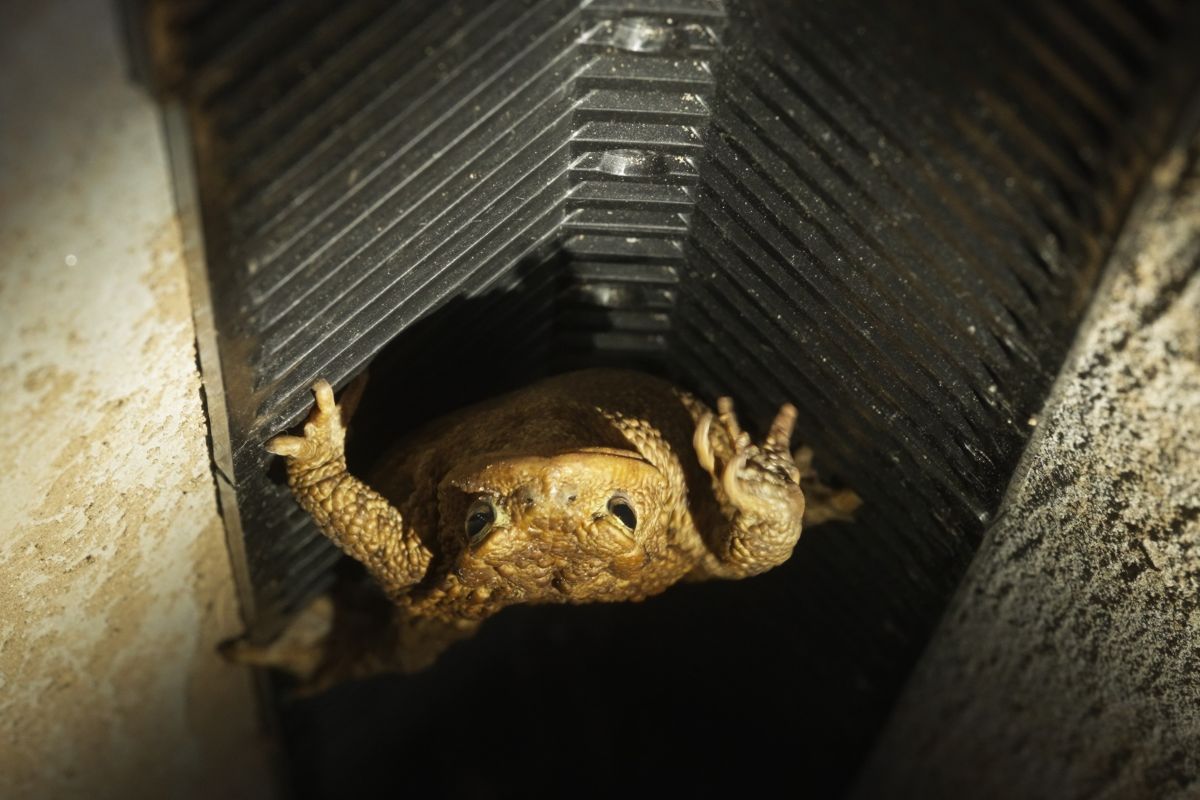What actually happens to your GFT - your fruit, vegetable and garden waste - after you have neatly thrown it in the green - or sometimes brown - bin? We wanted to see for ourselves. So Saskia drove with the rubbish men and women of Van Kaathoven for a day. Her route followed the VGF from the kerbside to processing at Valor in Sint-Oedenrode, ending at praise farmer Gerwin in the Noordoostpolder. There she saw how your peels and twigs turn into something unexpectedly valuable: a rich, organic material for farmers as well as for your own garden.
GFT collection
In cooperation with Waste Management Association
Vegetable, fruit and garden waste, or VGF waste, is a separate waste stream that most households collect at home in the green container. And with good reason: VGF waste is made into compost. Compost is a rich soil improver that farmers use on their land and that makes your garden happy. And the great thing is: it is completely natural, sustainable and circular. What you take from nature, you give back in a new form. How good is that? But to do that, the organic waste has to be clean. And that often goes wrong. Things that do not belong in the organic waste bin regularly end up there. Think plastic, glass, nappies or food packaging. So-called ‘compostable’ products such as coffee cups, bin liners and sanitary towels also cause problems. These are often biodegradable only under special conditions, and you won't find these in standard organic waste processing. This contaminates the stream and makes it more difficult to turn it into compost. A pity, because if we separate VGF waste properly, it actually produces something beautiful.
From GFT to compost
To see exactly how that works - from waste to soil improver - I drove along with Van Kaathoven's rubbish men and women. First along the houses, then with the truck full of VGF waste towards processing at Valor in Sint-Oedenrode. There, the waste is transformed into compost within two weeks. At least... if the VGF waste is delivered separately. How does it work?
- Upon arrival, the GFT is first checked thoroughly. If the load is clean enough, it is shovelled into a pile, shredded and mixed well. Some previously composted material that was not quite ready is also added. Anything that survives this check is allowed to proceed to the composting plant. Ready for the next step towards fine compost.
- At the composting plant, the real work begins: the GFT goes into a warm, humid room for about 14 days, comparable to a tunnel, where the temperature can reach 60-70 °C. Ideal for bacteria that love this climate and rapidly convert the waste into compost.
- After two weeks, the compost comes out of the tunnel and is sieved. What is already nice, mature compost can go straight on. What is not quite ready gets a second round in the tunnel.
- Even while sieving, they still take out rubbish from the organic waste that does not belong there. A bicycle saddle, cans, shards of a vase, cutlery... you name it. Such materials obviously cannot become compost and are therefore taken out. They are still incinerated with the residual waste.



In a fortnight from GFT waste to compost at waste processor Valor. You can see the video report of GFT processing here. Unfortunately, a lot of other household waste also ends up with the GFT which needs to be filtered out. Watch the video report on GFT collection here.
Compost for growing chicory
To complete the circle, I also visit chicory farmer Gerwin de Vries in Flevoland. He uses compost to grow chicory roots. These are the roots of chicory that, in water and soil, continue to grow into those familiar white heads. Compost plays a surprisingly versatile role in this. During dry summers, they discovered that compost retains soil moisture much better. And chicory loves water. The seeds need moisture to germinate properly, and thanks to compost, more and stronger plants simply sprout. This ensures a better harvest, less wastage and healthier plants.
But that's not all. Compost also helps Gerwin with another challenge: the fungal disease Phytophthora, notorious among chicory growers. This disease spreads at lightning speed through water, and the only effective pesticide is not allowed in organic cultivation. By working with compost when growing - instead of just water - this spread is prevented. The fungus becomes less contagious, which suddenly makes compost a smart fungicide. Gerwin is therefore super happy with compost: a beautiful circular natural product helps him to farm better and in the fight against climate change. And so he can hopefully grow another 12 million chicory heads this year!



Our GFT waste is used by farmers like Gerwin in growing fruits and vegetables. How circular do you want it to be? Watch the video report at farmer Gerwin's place here.
Why use compost? Six benefits at a glance!
Compost is kind of every greener gardener's secret weapon. Not only good for your plants, but also for the planet. So... why use it? Well, here's why:
- Less weeds: sprinkle it on top of your soil and you'll make the weeds nice and hard.
- Moisture retention: compost acts like a sponge. Ideal in dry summers.
- Packed with nutrition: plants feast on it, and so does your soil.
- Carbon storage: good for your garden and for the climate. Compost traps carbon in the soil, which is nice because it reduces CO2 in the air.
- Disease resistant: strong soil = fewer diseases.
- Less erosion: helps keep the soil together even during heavy rain.
In short: a lot of profit with a little compost. So do it!
This is how you make a difference with your GFT
So your fruit, vegetable and garden waste is valuable. Compost is not called the black gold for nothing. It nourishes the soil, helps crops grow and thus contributes to resilient agriculture and hence our food security. But it only succeeds if the GFT remains clean. A little bit of pollution can still help the process, but if it becomes too much, even the good organic waste becomes so contaminated that it cannot be saved. And that, of course, is a real shame. Therefore: throw away your kitchen and garden waste separately. In doubt about whether you can put something in the green bin? Then check waste separation guide.nl, that way you know for sure. Small effort, big difference!
Want more handy waste tips? TrashTalks is the platform that makes waste understandable and fun, with practical tips and surprising facts. Follow them on Instagram And become a real waste expert in your own kitchen.
More tips from thegreenlist.nl
- Also see: the sewer, obviously until you can't flush anymore.
- Also see: This is how glass recycling works.
- Also see: A look at an organic peanut butter factory.
Photo credits: thegreenlist.nl.






